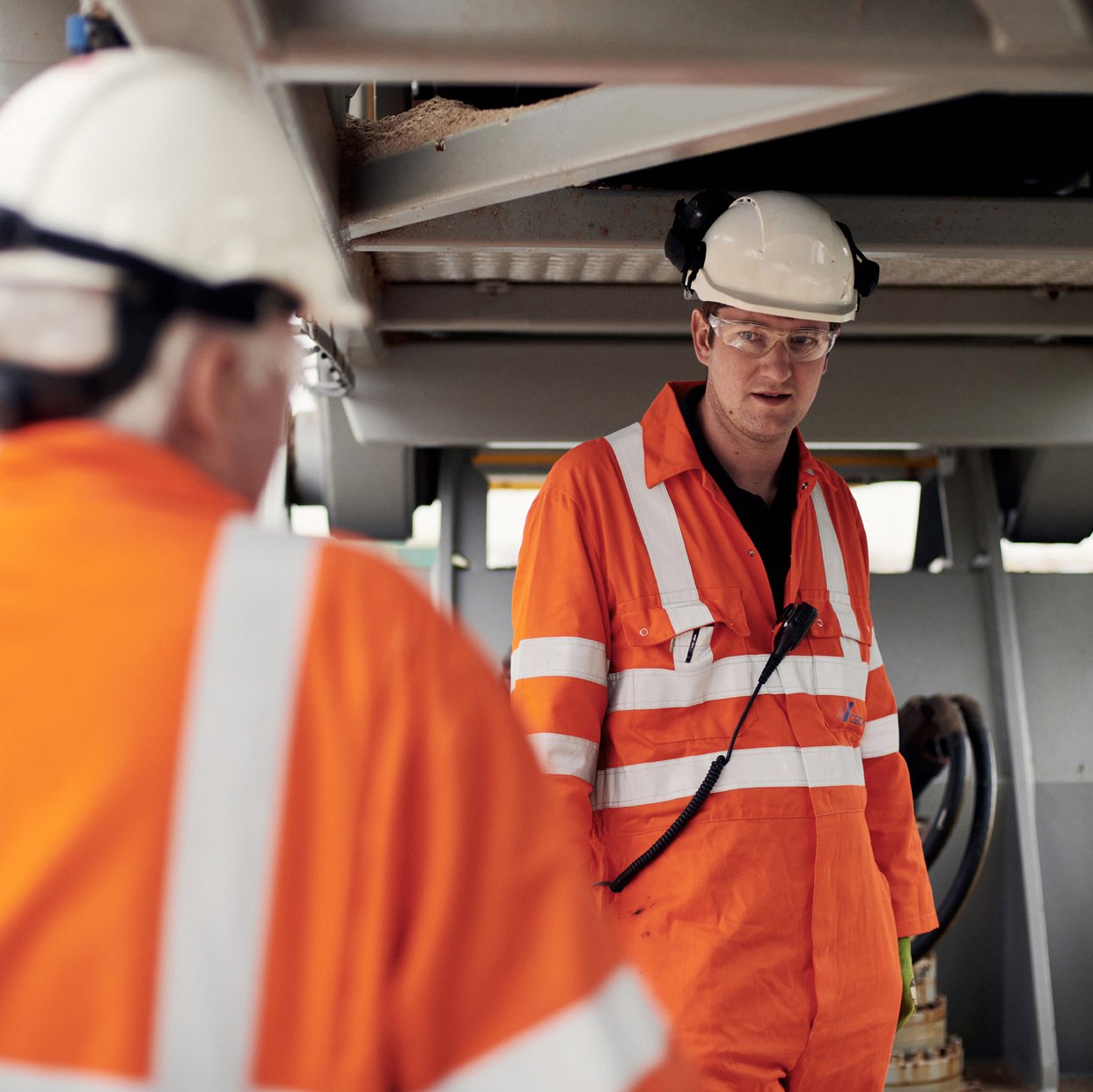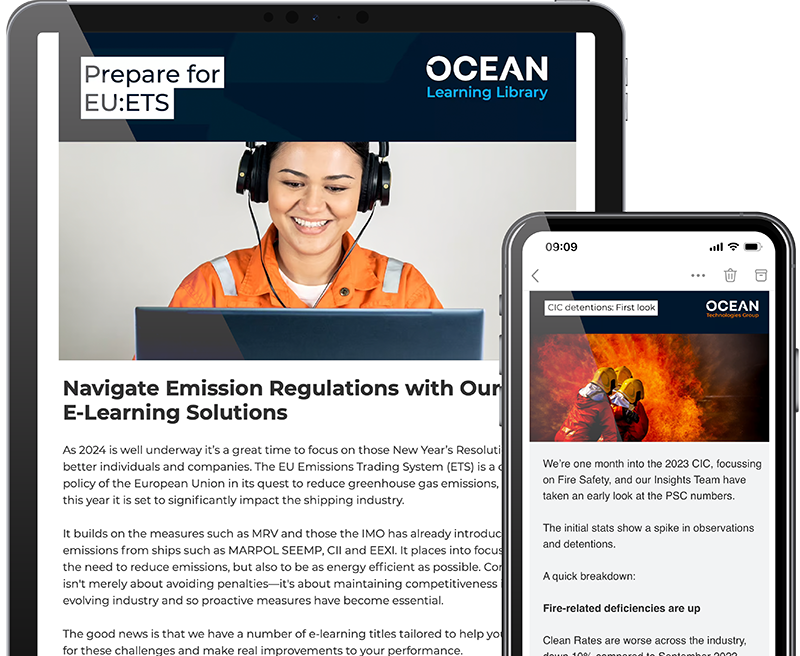Elevating Standards and Careers with CMS
In an industry where safety and operational excellence are non-negotiable, the maritime sector is constantly looking at how best to minimise incidents at sea. Regulation and international standards play a part, as do training and technology, but many experts argue that reducing incidents demands a deeper focus on human performance.
Competency management, the structured process of monitoring the application of knowledge and skills, is growing in popularity as a powerful tool for not just meeting regulatory standards but for transforming entire careers.
Recently, we hosted an insightful webinar discussing competency management and how it can be used to elevate operational standards and nurture the careers of those who keep the industry moving. We were joined by guest speakers from across the industry, each with experience in implementing a successful competency management system (CMS):

Frans Ubaghs
Senior Vetting Manager & Deputy Marine Director, INTERTANKO

John Reid
Training & Recruitment Manager, Seapeak

Andrew Easdown
Maritime Consultant

Raal Harris
Chief Creative Officer, Ocean Technologies Group
Led by our Chief Creative Officer, Raal Harris, our guests shared their perspectives on the importance and advantages of using a CMS, and its impact on crews on board and ashore.
What is competency, and why should you track it?
Training is a given in maritime. Seafarers spend significant amounts of time learning, completing courses, and renewing certifications to ensure they remain compliant. However, as Frans Ubaghs pointed out, qualifications alone don’t guarantee proficiency in the tasks required to ensure safety at sea.
Over the last decade, the tanker industry has been looking further at ways to minimise incidents beyond introducing technologies and international standardisation. This focus led to making improvements in the human element, arguably a key contributing factor to incidents at sea.
Research has found that crew qualifications and knowledge are not the common contributor to success. The application of knowledge and skills directly impact safety and operational success. Frans described CMS as a tool that enables the measurement of these interconnected elements consistantly.
As Andrew Easdown explained, competency goes further than completing mandatory training – it is about the ability to perform a task proficiently and consistently.
Companies need a consistent and unbiased measure of their crews’ ability to conform to standards and comply with regulations. Competency management is a tool that can provide this level of objective information, as well as support the ongoing skill and career development of the crew.

How does CMS provide value?
For organisations like Seapeak, which operates globally, the introduction of a CMS has been transformative. Their training and recruitment manager, John Reid, described how, having used CMS for 20 years, the benefits are clear to see.
As a multi-national organisation working with differing national curricula across the globe, the CMS provides Seapeak’s teams with a global standard for monitoring competence and structuring development.
The company has seen a noticeable increase in quality due to the success of its CMS, which gained DNV approval in April 2004. Seapeak’s crew training is now recognised as a higher standard than industry averages across the fleet. Inspectors have also noted the high level of competency on their visits, as the company’s employees confidently demonstrate their knowledge and what is expected of them.
John also explained how Seapeak proudly shares details of its CMS and its DNV approval with its clients. Over its years of development, the initiative has become a mark of quality and safety which Seapeak has found to be a real differentiator alongside competition in the market.
Identifying Measurable Competencies
How do you set measurable competencies for your organisation? As our guests discussed, there is a range of guidance available to use in the industry. Frans recommended starting with a simple framework, suggesting that you can even use high-level assessments such as TMSA as tools for measuring competency.
Andrew advised that it is important to be specific and ensure each competency is clearly defined – it must have an observable outcome. It is best to look for ways that a seafarer can demonstrate their knowledge and understanding of regulations and company policies, e.g. this can be applied to navigation or other technical tasks.
To design a competency, identify what you would expect a person to show or communicate to demonstrate their competency. Depending on the nature of the competency, both the measurements and methods of assessment should be specific. A competency is commonly on a technical operation, but it equally, it can be related to company processes or procedure and how to apply them.

Advantages of using a digital CMS
Reflecting on Seapeak’s workflows, John described how having its digital CMS as part of its LMS, the Ocean Learning Platform, keeps everything in one place and gives Seapeak an extra advantage. The system is a streamlined single source of truth across training and assessment, and is simpler to operate than using separate solutions.
The OLP CMS keeps competency records in a single location, easily accessible to stakeholders across multiple devices. This is a big advantage for seafarers who can flexibly review their competencies and related e-learning resources while onboard or on leave. E-learning can be assigned to them to address a knowledge gap at the point of it arising, which can relieve pressure on management teams. Managers can also quickly refer to competencies for auditing or to provide proof of competency to inspectors or customers.
Learn more about Competency Management through our dedicated resource hub.
The ingredients for a successful CMS
To make CMS work, John advised, you need to construct a comprehensive appraisal process, a competency profile relevant for each rank, alongside a fair & achievable promotion pathway. In addition to this, you must provide support for your employees to progress, including:
-
assessor training
-
mentoring
-
safe working conditions
-
career development and guidance
-
further training opportunities

John highlighted that one of the strongest features of a CMS is its ability to support career development. Many seafarers are naturally motivated by the prospect of climbing ranks.
To link individual career aspirations and company goals, Seapeak shares a structured career pathway with its seafarers, which is embedded in its CMS. Each rank along the pathway requires a set group of competencies, which are made clear and achievable. The requirements are detailed from bottom to top, and with regular appraisals and support along the way, employees remain knowledgeable of how to work toward the requirements of the next rank.
Read more about CMS for mentoring and career progression here.
Retention and transition
Raal Harris also highlighted that, in times of crew shortage, the approach of building people in their careers should be an integral part of a retention strategy. When a CMS is implemented in an organisation, employees understand that there is an investment into their future in the company.
John noted that the OLP CMS provides a clear view of career-driven individuals who are exceeding expectations, as records highlight whenever they demonstrate competencies aligning with higher ranks than their own.
Andy also added that a CMS also helps people without interest in a promotion who may want to stay at one level or rank, as it provides support for them to focus on how to achieve excellence within their role.
He said it also proves exceptionally useful when moving seafarers into shore-based roles. The environment of office-based roles is very different to working at sea, in addition to the expected skills and behaviours that come with them. A CMS provides clear expectations to an individual before they begin working in the role, enabling them to prepare and ease into their new environment comfortably.
The Power of Continuous Evaluation
A key takeaway from the session was the clear agreement that a CMS is a commitment to excellence and needs to be actively managed to maximise its impact.
John shared that Seapeak regularly measures the effectiveness of its CMS through a competency management committee. Made up of leaders in key functions, the committee meets once a quarter to review competency performance across the quarter, identifying any incidents which may highlight training or competency gaps. As a result of each review, the committee decides on resolving actions, which may lead to the amendment, removal or addition of a competence in their system.
Commenting on this regular evaluation of competency, Frans pointed out how a CMS is an adaptable and constantly moving initiative, evolving with the working environment. Adding to that, Andrew noted that a CMS enables you to take different approaches to new fuels and technologies. It also empowers employees to challenge policies and regulations while their working environment adapts.
In conclusion
Competency management systems (CMS) enable businesses to unlock the potential of their workforce, improve safety and performance, and reduce costs. It leads to increased quality of operations, which can be evidenced to customers and partners – improving reputations.
By providing a clear, objective measure of workforce competence, a CMS allows companies to assess and address skills gaps systematically, reducing risk. As it promotes the development of talent in-house, competency management contributes to reduced crewing costs. Upskilling from an existing talent pool eliminates or reduces the costs associated with recruiting – from advertising and screening to hiring and onboarding.
A CMS implementation needn’t be complex. Companies can start small and scale over time, focusing initially on a few core competencies. Regular evaluations ensure that the CMS adapts as new technologies and requirements emerge, enabling organisations to remain agile and responsive to industry developments. This approach ensures competency management is a continuous process of improvement—one that builds a culture of excellence that resonates with clients, inspectors, and partners alike.
Learn more about OTG Competency Management
You can see a recording of the full webinar below

Want to be first to hear all our news?
Subscribe to our Newsletter to keep up to date!

